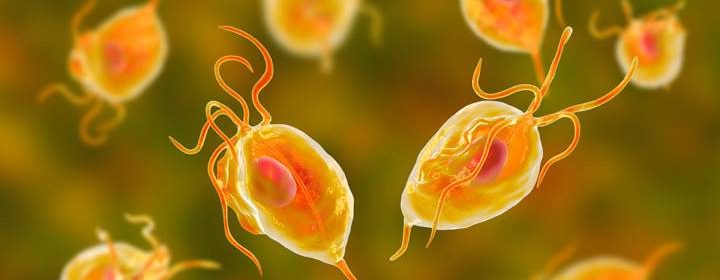All about trichomoniasis, the world’s most common curable STI

Around 156-million new cases of the sexually transmitted infection (STI) trichomoniasis were diagnosed worldwide in 2016, according to new statistics from the World Health Organization.
That’s more than chlamydia, more than gonorrhea and more than syphilis – which are all infections that we hear much more about in Canada.
Related
 Are online hookups behind Canada’s rising STI rates?
Are online hookups behind Canada’s rising STI rates?
Because the disease is most common in low-income countries, Canadians might not be familiar with it, according to Dr. Rob Dmytryshyn, medical director of the Bay Centre for Birth Control and special treatment clinic at Women’s College Hospital in Toronto. Still, he estimates that his clinic sees a case every couple of months.
Here’s what you need to know:
What is trichomoniasis?
Trichomoniasis, sometimes called “trich” (pronounced “trick”) is a sexually transmitted infection caused by a parasite – not bacteria or a virus, like many other STIs.
The parasite is a single-celled organism called Trichomonas vaginalis. It’s spread through sexual contact and can infect both the penis and vagina, according to information from the B.C. Centre for Disease Control.
Unlike many organisms that cause STIs, it can actually survive a short time outside the body. “It can live in places like damp towels,” Dmytryshyn said.
“So this is one that you could possibly claim that you caught it from a towel.”
The Public Health Agency of Canada says it’s rare to get an infection without sexual contact though.
How common is it?
Trichomoniasis is the world’s most common curable STI, according to the WHO – though there are others, like herpes, that are much more common but can’t be cured.
Because doctors in Canada aren’t required to report trichomoniasis infections to public health agencies, there’s not great data on how common it is in Canada. A 2017 study of sexual health clinics in western Canada found that about 2.8 per cent of patients had the infection – though as the study was done on people at sexual health clinics, that may have skewed the results.
In the U.S., the Centers for Disease Control and Prevention estimates that around 3.7-million people have the infection. It’s the most common curable STI there, the CDC says.
What are the symptoms?
Most people don’t actually show any symptoms, said Dr. Melanie Taylor, author of the World Health Organization’s statistical report. “People don’t realize that they have the infection, they don’t realize they are at risk and they don’t go in for testing and treatment and thus the opportunity to transmit the infection is quite high,” she said.
That doesn’t mean it’s harmless though. In women who do show symptoms, it looks something like a yeast infection, with inflammation of the vaginal tissue, Dmytryshyn said. There may be a “yellowy or maybe creamy discharge” as well.
Men can also get irritation of their penis and occasionally a discharge as well, he said.
Left untreated, trichomoniasis can be “very uncomfortable” for a woman and cause lower abdominal pain, Taylor said. “In addition, if the woman is infected during pregnancy, it can cause adverse pregnancy outcomes, specifically premature delivery, premature rupture of membranes and low birth weight due to that prematurity.”
Infection with trichomoniasis can also put you at a higher risk of catching HIV or other serious STIs, because it irritates the vaginal wall, Dmytryshyn said.
How is it treated?
In Canada, most patients are easily treated with Metronidazole, an antibiotic that also kills the parasites, Dmytryshyn said.
It’s important to treat both sexual partners, as they can easily keep passing the infection back and forth, he said.
Using a condom and getting regular STI testing is the best way to prevent and detect the infection, he said.
Sign up for our Health IQ newsletter
© 2019 Global News, a division of Corus Entertainment Inc.
Source: Read Full Article

